Pallet Changing Machine: How to Replace Ice-Coated Pallets Quickly?
Dealing with ice-coated pallets in your cold storage or shipping bay is a constant headache. They are slippery, which creates a huge safety risk for your team. They can also get stuck in racking systems or be rejected by your customers, causing delays and hurting your reputation. I have seen manual attempts to solve this problem; they are always slow, require multiple workers, and often lead to damaged goods or even injuries. This inefficiency directly impacts your bottom line, turning a simple logistical step into a major operational bottleneck.
The fastest and safest way to replace an ice-coated pallet is by using an automated pallet changing machine, also known as a pallet inverter. This equipment securely clamps the entire product load, rotates it 180 degrees, allows for the easy removal of the original icy pallet, and then places a new, clean pallet onto the load before rotating it back. The entire cycle is completed in about one to two minutes, with a single operator.
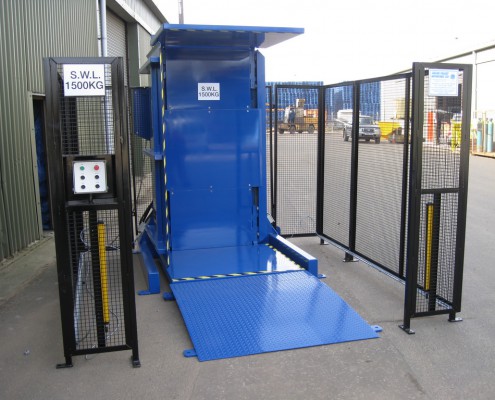
Now, I understand that as a practical business owner, you need more than just a quick summary. You need to know how this technology works, if it's right for your specific products, and what kind of return on investment you can expect. Having spent my entire career designing, building, and implementing these solutions, I want to walk you through the details. Let's break down how a pallet changing machine can solve this icy problem and become a strategic asset for your operation.
How does a pallet changing machine work to handle frozen goods?
You might be wondering if a machine can really handle a heavy, frozen, and potentially unstable load without causing damage. It is a valid concern. You worry that the clamping force might be too strong, crushing your products, or that the icy surface could cause the entire load to slip during the process. Having seen these machines in action for decades, I can assure you that modern pallet changers are engineered with precision to solve these exact problems. They are not brute force machines; they are sophisticated pieces of equipment.
A pallet changing machine handles frozen goods by using a combination of controlled pressure and precise movement. It uses adjustable hydraulic or pneumatic clamps with specialized non-slip surfaces to securely grip the load from both sides. This ensures the products are held firmly but gently. The machine then either rotates the entire clamped load or uses a push-pull mechanism to slide the load smoothly from the old pallet to the new one, all within a secure, automated cycle.
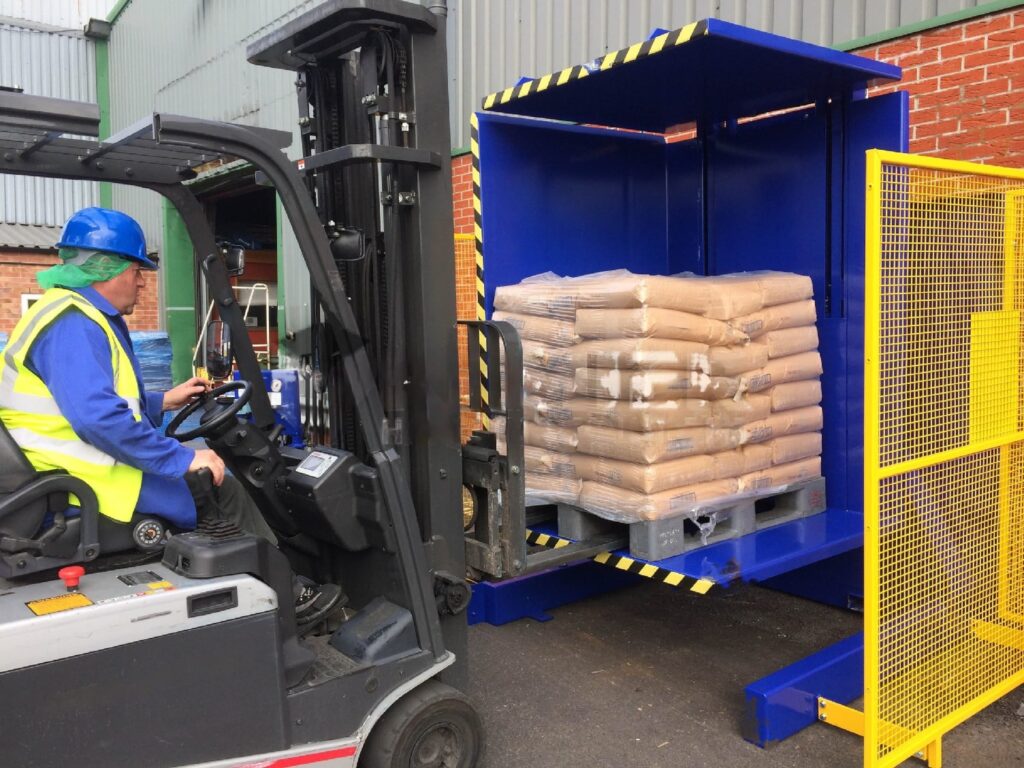
Let's dive deeper into the engineering that makes this possible. The success of the process depends on two core components: the clamping system and the transfer method. Understanding these will help you see why this is a reliable solution for even the most challenging loads.
The Clamping System: Precision is Key
The heart of the machine's safety and effectiveness is its clamping system. When dealing with ice-coated pallets, the load itself can be cold and brittle. Too much pressure could cause damage, while too little could result in a disastrous slip.
- Adjustable Pressure: Modern machines allow operators to set the clamping pressure based on the load's weight, stability, and fragility. For a steel mill like yours, you might be handling heavy-duty parts that can withstand high pressure, but you might also handle finished goods that require a gentler touch. This adjustability is critical.
- Non-Slip Surfaces: The clamping walls are not just flat steel plates. They are often coated with high-friction rubber or other specialized materials. This dramatically increases the grip, ensuring that even if there's a layer of ice or condensation, the load remains locked in place during the transfer.
- Smart Sensors: Advanced systems use sensors to detect the load's height and width, automatically adjusting the clamps for a perfect fit every time. This removes guesswork and human error, which is a major step up from manual methods.
The Transfer Method: Rotation vs. Push-Pull
There are two primary ways a pallet changer transfers the load. The right choice depends on your product and your operational layout.
| Feature | Rotation (Pallet Inverter) | Push-Pull System |
|---|---|---|
| Best For | Stable, uniform loads (e.g., boxes, bags, pails) | Less stable or layered loads |
| Mechanism | Clamps load, rotates 90° or 180° | Pushes load from one pallet to another |
| Speed | Very fast (typically under 60 seconds) | Slightly slower cycle time |
| Footprint | Taller, but can have a smaller floor footprint | Longer, requires more floor space |
| Load Integrity | Excellent, as the load is always supported | Good, but requires a stable "face" to push against |
In my experience, for most frozen goods that are boxed or bagged, the 180-degree rotation inverter is the most common and efficient solution. It fully supports the load from the top and sides throughout the entire process, minimizing any chance of shifting. For a business leader like you, Javier, who values stability and predictability, this method provides the highest level of assurance.
What are the key benefits of using a pallet changer for ice-coated loads?
You've seen the mechanics, but the real question is, "What's in it for my business?" An investment in new equipment must deliver clear, measurable returns. You face pressure from energy costs and aging equipment, so any new machine has to pull its weight by improving efficiency and lowering costs. You cannot afford a machine that is just a "nice to have." Let me be direct: a pallet changing machine is not just a convenience; it is a powerful tool for improving safety, throughput, and your bottom line.
The primary benefits of using a pallet changer for ice-coated loads are a significant boost in operational speed, a drastic reduction in workplace injuries, minimized product damage, and guaranteed compliance with downstream pallet requirements. These advantages directly address key operational challenges and contribute to higher overall profitability.
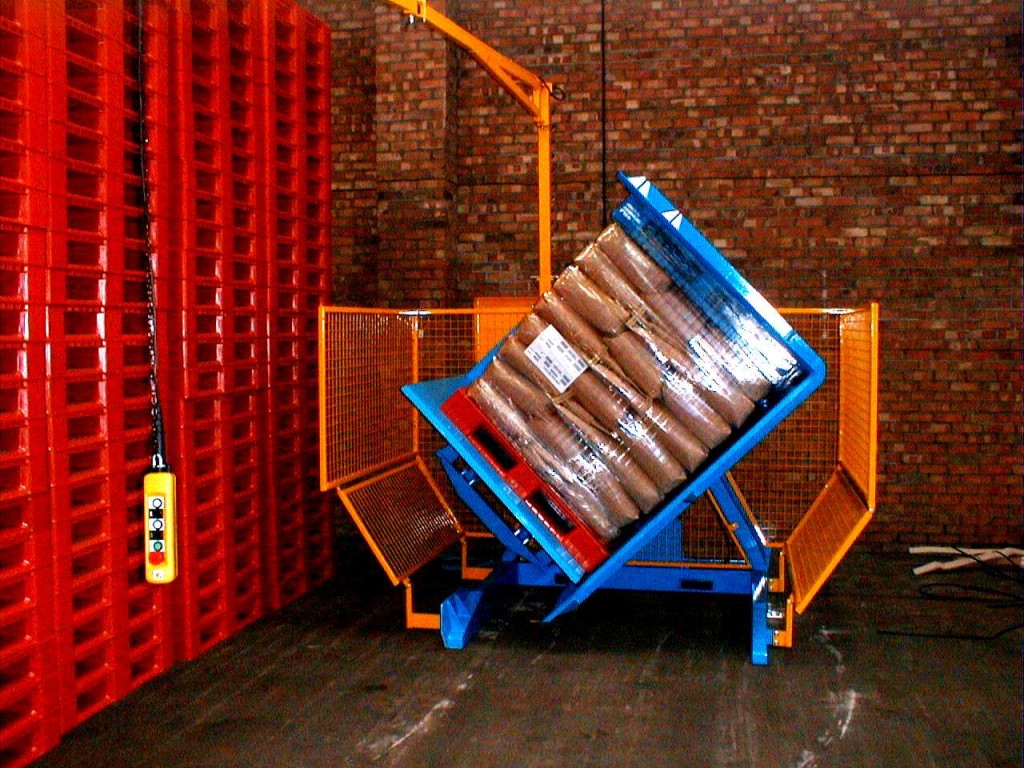
Let's move beyond general statements and look at the specific, tangible ways this machine impacts your goals of reducing costs and improving productivity. Each of these benefits translates into real dollars saved and efficiencies gained.
Drastically Improved Efficiency and Throughput
Your goal is to increase equipment uptime to 95%. Bottlenecks are your enemy. Manually changing an icy pallet is a major bottleneck. It can take two or more employees 15 to 20 minutes. It's slow, unpredictable, and stops your entire logistics flow.
A pallet changing machine reduces this process to under two minutes with a single operator. Imagine a truck arrives with 20 pallets that need to be swapped.
- Manual Method: 20 pallets x 15 minutes/pallet = 300 minutes (5 hours) of labor and dock time.
- Machine Method: 20 pallets x 2 minutes/pallet = 40 minutes of labor and dock time.
This is not a small improvement; it's a transformation of your receiving or shipping process. It frees up your workforce for other value-added tasks and gets trucks in and out of your facility faster. This directly contributes to your goal of higher capacity utilization by eliminating a common point of delay.
Enhanced Worker Safety and Reduced Costs
Safety is paramount, but it also has a direct financial component. Manually handling heavy, frozen loads from a slippery, ice-coated pallet is one of the most dangerous jobs in a warehouse. It leads to back injuries, slips, and falls. I remember in my early days in the factory, I witnessed a near-miss where a load shifted during a manual transfer. That memory has always stuck with me. These incidents result in lost workdays, higher insurance premiums, and potential legal liabilities.
A pallet changer automates this hazardous task. The operator simply loads the pallet with a forklift and pushes a button. The machine does all the heavy lifting and maneuvering within a secure safety cage. This virtually eliminates the risk of injury associated with pallet swapping. For a leader focused on both employee well-being and operational costs, this is a clear and undeniable win.
Protection of Your Products and Your Brand
Every time a load is handled manually, there's a risk of damage. With frozen goods, that risk is even higher. Dropped boxes, crushed packaging, and broken seals can lead to significant product loss. Furthermore, if you ship a product on a damaged or non-compliant pallet, it can be rejected by your customer. This not only costs you money in returns and replacements but also damages your reputation for quality and reliability.
The pallet changer's controlled, gentle process protects the integrity of your products. It ensures that every pallet leaving your facility is clean, in good condition, and meets the exact specifications of your customer or logistics partner. This reduces waste and protects your brand image.
How do you choose the right pallet changing machine for your specific needs?
Alright, you're convinced of the benefits, but now comes the critical part: choosing the right machine. The market has many options, from simple, no-frills models to fully automated systems. Making the wrong choice can be a costly mistake, leaving you with a machine that doesn't fit your workflow, can't handle your products, or becomes a maintenance headache—exactly the kind of problem you're trying to solve with your aging equipment. As an engineer, I believe the selection process should be methodical and data-driven.
To choose the right pallet changing machine, you must first conduct a thorough analysis of four key areas: your specific load characteristics (weight, dimensions, stability), your required daily throughput, the physical constraints of your facility, and your long-term automation goals. A decision based on these factors ensures you invest in a solution that provides value for years to come.
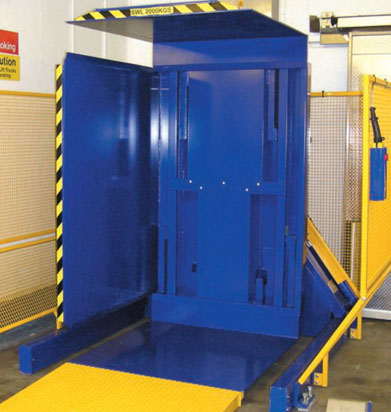
Let's walk through this selection process step-by-step. This is the same framework I use when consulting with clients to ensure they get the perfect fit for their operation. Answering these questions will guide you to the right model and prevent a poor investment.
Step 1: Analyze Your Load
The product itself is the most important factor. You must define its properties precisely.
- Weight: What is the maximum weight of your fully loaded pallet? The machine must have a rated capacity well above your heaviest load. For a steel plant, this could range from 1000 kg to over 2000 kg.
- Dimensions: What are the length, width, and height of your typical loads? This determines the size of the machine's loading bay and clamping range. Be sure to consider your largest and smallest loads.
- Stability: Is your load a solid, stable block, or is it made of loose bags or oddly shaped parts? As we discussed, stable loads are perfect for a 180-degree inverter. Less stable loads might require a 90-degree tilter or a push-pull system.
Step 2: Determine Your Throughput Needs
How many pallets do you need to change per hour or per shift? Your answer will determine the necessary level of automation.
- Low Volume (1-5 pallets/hour): A standard, stand-alone, forklift-loaded machine is likely sufficient.
- Medium Volume (5-20 pallets/hour): You might consider a model with floor-level loading or simple infeed/outfeed roller conveyors to speed up the process.
- High Volume (20+ pallets/hour): For this, you need a fully automated, inline system that integrates seamlessly with your existing conveyor lines or AGVs. This aligns directly with a goal of digital transformation and creating a "smart" production flow.
Step 3: Assess Your Facility and Build Quality
The machine has to fit in your plant, both physically and operationally.
- Footprint: Do you have enough floor space? Remember to account for the machine itself, plus the maneuvering area for forklifts.
- Power: What are your available utilities? Most machines are electric-hydraulic, so you'll need an adequate electrical supply.
- Environment: For a steel mill environment, you need a heavy-duty machine. I always advise clients to look at the build quality. Check the thickness of the steel frame, the quality of the welds, and the reputation of the components used (e.g., Siemens PLC, Schneider electrics, Parker hydraulics). A robust machine will withstand the demanding environment and align with your goal of production stability.
This checklist will help you create a clear specification sheet. When you talk to suppliers, you will be in control, armed with data, and focused on finding a true solution, not just buying a product.
| Selection Factor | Key Questions to Ask Yourself | Why It Matters for a Steel Mill CEO |
|---|---|---|
| Load Capacity & Size | What are my heaviest and largest loads? | Ensures the machine is not a point of failure; guarantees operational safety and stability. |
| Product Stability | Are my goods boxed, bagged, or in open bins? | Determines the correct transfer technology (e.g., rotation vs. push-pull) to prevent product damage. |
| Required Throughput | How many pallets per shift must be processed? | Defines the level of automation needed to eliminate bottlenecks and meet production targets. |
| Integration Needs | Will this be a standalone unit or part of an automated line? | Crucial for your digital transformation goal; ensures the machine is a step forward, not an isolated island. |
| Build Quality | What materials and components are used? | A heavy-duty build ensures long-term reliability and low maintenance, addressing challenges with aging equipment. |
What is my take on integrating pallet changers into a modern steel mill?
Having spent my life in the packing machinery industry, from my start on the factory floor to building my own company, I have seen technology evolve. I have also seen how the most successful companies, like yours, think. You are not just buying a machine; you are investing in a capability. So, when a client in heavy industry asks for my perspective on a pallet changer, I tell them to look beyond the immediate task of swapping pallets.
My take is this: A pallet changing machine is not just a piece of logistics equipment; it is a strategic enabler for achieving your core goals of digitalization, cost reduction, and enhanced safety. It is a critical node in a modern, automated factory that solves a physical problem while providing digital opportunities.
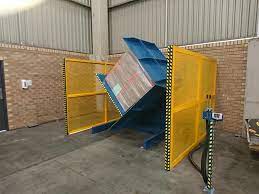
When I work with leaders like you, Javier, who have a forward-thinking vision, the conversation shifts from the machine's features to its strategic role in the factory of the future. Here is how I see it fitting into your broader objectives.
It Is a Gateway to Deeper Automation
Your goal is to increase efficiency and implement smart systems. You cannot have a fully automated production line or warehouse if it is interrupted by a manual, slow, and unsafe process like pallet swapping. A pallet changer is the bridge that connects different parts of your automated ecosystem. It can receive a pallet from a forklift or an AGV, perform its function, and then place the new pallet onto an outbound conveyor system. It removes a manual bottleneck, which is essential for achieving the 95% effective run time you are targeting. Without solving these small but critical manual tasks, true "lights-out" automation is impossible.
It Is a Valuable Data Collection Point
You aim to deploy MES, IoT sensors, and big data analytics. A modern pallet changer can be equipped with sensors that do more than just operate the machine.
- Load Cells: Can weigh each pallet, providing valuable data for inventory management and shipping verification.
- Cycle Counters: Track usage, which is critical for your predictive maintenance programs. This data tells you when to service the machine before it fails, supporting your goal of production stability.
- Fault Diagnostics: Modern PLCs can communicate directly with your MES, reporting their status and any issues in real-time.
This turns the machine from a simple tool into an intelligent asset that feeds your data platforms, giving you the total production visibility you want to achieve.
It Is a Tangible Step in De-Risking Your Operations
Your challenges include cost volatility and safety. This machine directly attacks both. By automating a dangerous job, you reduce the financial risk associated with workplace accidents. By ensuring every pallet is perfect, you reduce the financial risk of rejected shipments and product damage. When you are managing a 2-million-ton steel operation, these "small" risks add up to significant numbers. This investment provides a clear and immediate return by taking risk out of the system. That is a language every successful CEO understands.
Ultimately, my philosophy at SHJLPACK has always been about providing a total solution. A machine like this is a perfect example. It solves the immediate problem of an ice-coated pallet, but its true value is in how it helps you build a safer, more efficient, and more data-driven operation for the future.
Conclusion
A pallet changing machine effectively solves the issue of ice-coated pallets. It boosts safety and efficiency and is a vital component in the digital transformation of your modern factory.




